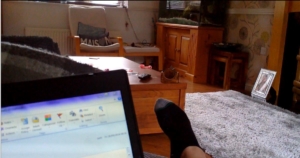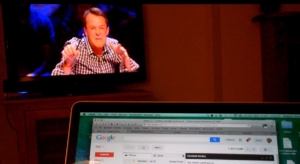There is no doubt that digital technologies have an impact on how we manage our work-life boundaries (aka ‘boundary management’ or ‘boundary work’). Although scholars have traditionally utilised the concepts of ‘integration’ and ‘segmentation’ to describe individual boundary management practices, advances in digital technologies and their thorough integration into contemporary life require a more sophisticated account that goes beyond individual preferences.
Drawing on video diaries and interviews with 30 UK-based workers, collected as part of the Engineering and Physical Sciences Research Council (EPSRC) funded Digital Brain Switch project, Petros Chamakiotis, Gillian Symon and Rebecca Whiting provide an alternative understanding of contemporary boundary management through the concepts of ‘hybridity’ and ‘liminality’.
Hybridity indicates a fusion of two traditionally separate domains — in this case, the domains of ‘work’ and ‘life’ — where the two may be seen as spatially and temporally merged. Liminality, on the other hand, is a state of suspension or in-betweenness, when our involvement in either work or leisure is ambiguous. Employing these concepts, their research, as detailed in a recent volume of the Information Systems Journal, highlights that boundary management is much more creative and agentic than previous literature has suggested. Rather, it is presented as an ongoing and dynamic interplay of hybridity and liminality.
 The authors identify two scenarios. First, the interplay leads to desired boundary work outcomes. Examples here include liminality enabling and maintaining hybridity in a controlled way. Leanne, one of their research participants, was seen in her video diary working in her lounge while also watching TV with her kids at the weekend. Leanne had specifically chosen a simple work task that leaves ambiguity whether she is working or watching TV, enabling an apparent hybridity of time and space for her children.
The authors identify two scenarios. First, the interplay leads to desired boundary work outcomes. Examples here include liminality enabling and maintaining hybridity in a controlled way. Leanne, one of their research participants, was seen in her video diary working in her lounge while also watching TV with her kids at the weekend. Leanne had specifically chosen a simple work task that leaves ambiguity whether she is working or watching TV, enabling an apparent hybridity of time and space for her children.
The second scenario includes examples whereby the interplay led to undesired boundary work outcomes, often because poorly utilised liminality led to uncontrolled hybridity. Here, Stephen is seen in his lounge in the evening having lost control of hybridity because of a failure to strategise.
 Unlike Leanne above, Stephen selected a task that was not liminal (answering emails to colleagues while at home), signaling availability to colleagues and generating an uncontrolled hybrid situation that rapidly escalated into his being fully immersed in work, neglecting those around him (his wife) during leisure time.
Unlike Leanne above, Stephen selected a task that was not liminal (answering emails to colleagues while at home), signaling availability to colleagues and generating an uncontrolled hybrid situation that rapidly escalated into his being fully immersed in work, neglecting those around him (his wife) during leisure time.
This work challenges dominant understandings in the work-life field and captures our more dynamic contemporary context. We have become skilled at managing our digital lives, juggling hybridity and liminality to enable creativity and continual adaptation of boundaries to current situations. Future research could adopt these concepts to study different information systems (IS) phenomena beyond the work-life debate.





